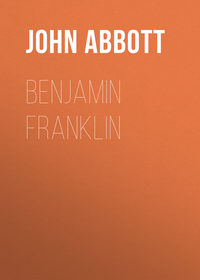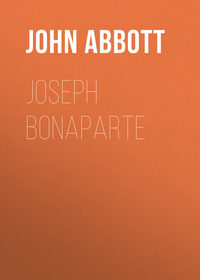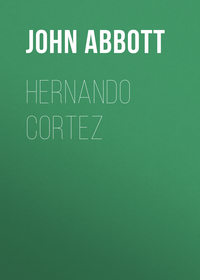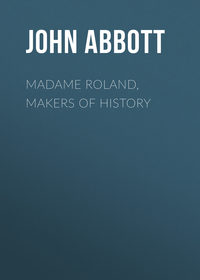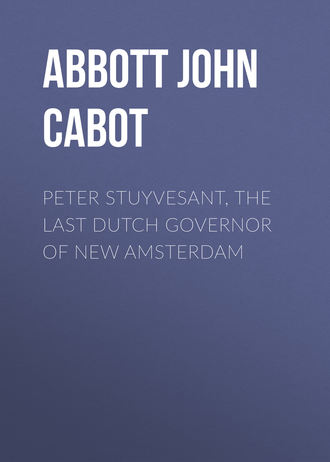 полная версия
полная версияPeter Stuyvesant, the Last Dutch Governor of New Amsterdam
"A more elegant breakfast I never saw; rich plate; a very large silver coffee pot; a very large silver tea pot; napkins of the very finest materials; toast and bread and butter in great perfection. After breakfast a plate of beautiful peaches, another of pears and a muskmelon were placed on the table."
The Revolution proved the utter ruin of these great landed proprietors, who naturally espoused the cause of the British court. The habits of life to which they and their fathers had been accustomed necessarily rendered all the levelling doctrines of the Revolution offensive to them. They rallied around the royal banners and went down with them.
Some few of the landed proprietors espoused the cause of the people. Among others may be mentioned the Livingstons and the Schuylers, the Jays, the Laurences, and a portion of the Van Courtlands, and of the Morris family. Fortunately for the Patroon Van Rensselaer, he was a minor, and thus escaped the peril of attaching himself to either party.
Negro slavery in a mild form prevailed in these early years in New York. The cruel and accursed system had been early introduced into the colony. Most of the slaves were domestic servants, very few being employed in the fields. They were treated with personal kindness. Still they were bondmen, deprived of liberty, of fair wages, and of any chance of rising in the world. Such men cannot, by any possibility, be contented with their lot. Mr. William L. Stone, in his very interesting History of New York, writes:
"As far back as 1628, slaves constituted a portion of the population of New Amsterdam; and to such an extent had the traffic in them reached that, in 1709, a slave market was erected at the foot of Wall street, where all negroes who were to be hired or sold, stood in readiness for bidders. Their introduction into the colony was hastened by the colonial establishment of the Dutch in Brazil and upon the coast of Guinea, and also by the capture of Spanish and Portuguese prizes with Africans on board.
"Several outbreaks had already happened among the negroes of New Amsterdam; and the whites lived in constant anticipation of trouble and danger from them. Rumors of an intended insurrection real or imaginary, would circulate, as in the negro plot of 1712, and the whole city be thrown into a state of alarm. Whether there was any real danger on these occasions, cannot now be known. But the result was always the same. The slaves always suffered, many dying by the fagot or the gallows."
In the year 1741, a terrible panic agitated the whole city in apprehension of an insurrection of the slaves. The most cruel laws had been passed to hold them firmly in bondage. The city then contained ten thousand inhabitants, two thousand of whom were slaves. If three of these, "black seed of Cain," were found together, they were liable to be punished by forty lashes on the bare back. The same punishment was inflicted upon a slave found walking with a club, outside of his master's grounds without a permit. Two justices could inflict any punishment, except amputation or death, upon any slave who should make an assault upon a Christian or a Jew.
A calaboose or jail for slaves stood on the Park Common. Many of the leading merchants in New York were engaged in the slave trade. Several fires had taken place, which led to the suspicion that the slaves had formed a plot to burn the city and massacre the inhabitants. The panic was such that the community seemed bereft of reason. A poor, weak, half-crazed servant-girl, Mary Burton, in a sailor's boarding house, testified, after much importunity, that she had overheard some negroes conferring respecting setting the town on fire.
At first she confined her accusations to the blacks. Then she began to criminate white people, bringing charges against her landlord, his wife and other white persons in the household. In a History of this strange affair written at the time, by Daniel Horsmanden, one of the Justices of the Supreme Court, we read,
"The whole summer was spent in the prosecutions. A coincidence of slight circumstances was magnified, by the general terror, into violent presumptions. Tales collected without doors, mingling with the proofs given at the bar, poisoned the minds of the jurors, and this sanguinary spirit of the day suffered no check until Mary, the capital informer, bewildered by the frequent examinations and suggestions, began to touch characters which malice itself dare not suspect."
During this period of almost insane excitement, thirteen negroes were burned at the stake, eighteen were hanged, and seventy transported.
I cannot conclude this treatise upon the olden time better than by quoting the eloquent words of Mr. Kip:
"The dress, which had for generations been the sign and symbol of a gentleman, gradually waned away, till society reached that charming state of equality in which it became impossible, by any outward costume, to distinguish masters from servants. John Jay says, in one of his letters, that with small clothes and buckles the high tone of society departed. In the writer's early day this system of the past was just going out. Wigs and powder and queues, breeches and buckles, still lingered among the older gentlemen, vestiges of an age which was vanishing away.
"But the high toned feeling of the last century was still in the ascendant, and had not yet succumbed to the worship of mammon, which characterizes this age. There was still in New York a reverence for the colonial families, and the prominent political men, like Duane, Clinton, Golden, Radcliff, Hoffman and Livingston, were generally gentlemen, both by birth and social standing. The time had not yet come when this was to be an objection to an individual in a political career. The leaders were men whose names were historical in the State, and they influenced society. The old families still formed an association among themselves, and intermarried, one generation after another. Society was therefore very restricted. The writer remembers in his childhood, when he went out with his father for his afternoon drive, he knew every carriage they met on the avenues.
"The gentlemen of that day knew each other well, for they had grown up together and their associations in the past were the same. Yet, what friendships for after-life did these associations form! There was, in those days, none of the show and glitter of modern times. But there was, with many of these families, particularly with those who had retained their landed estates and were still living in their old family homes, an elegance which has never been rivalled in other parts of the country. In his early days the writer has been much at the South, has staid at Mount Vernon when it was held by the Washingtons; with Lord Fairfax's family, at Ashgrove and Vancluse; but he has never elsewhere seen such elegance of living as was formerly exhibited by the old families of New York.
"One thing is certain, that there was a high tone prevailing at that time, which is now nowhere to be seen. The community then looked up to public men, with a degree of reverence which has never been felt by those who have succeeded them. They were the last of a race which does not now exist. With them died the stateliness of colonial times. Wealth came in and created a social distinction which took the place of family; and thus society became vulgarized.
"The influences of the past are fast vanishing away, and our children will look only to the shadowy future. The very rule by which we estimate individuals has been entirely altered. The inquiry once was, 'Who is he?' Men now ask the question, 'How much is he worth?' Have we gained by the change?"
THE END1
Winslow in Young (p. 371).
2
Bradford in Prince, 248.
3
Dutch miles, equal to sixteen English miles.
4
Morton's memorial, page 176.
5
Hist. of New York, by John Romeyn Brodhead. Vol. I, p 257.
6
History of the State of New York, p. 203.
7
History of the State of New York, By John Romeyn Brodhead Vol I. p. 473.
8
John Romeyn Brodhead, Vol. 1. p. 521. E.B. O'Callaghan. M D Vol 2. p. 157.
9
"History of New Netherland" by E.B. O'Callaghan, Vol 2. p. 317
10
Officers of a very important municipal court.
11
See Brodhead's State of New York, vol. 1. p. 721; also O'Callaghan's New Netherland, vol 2. p. 489.
12
This was one cent and a half for the three, or half a cent each.





